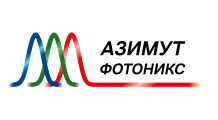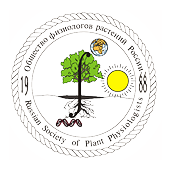Новости науки и практики // Январь 2020

Plasma Membrane Domain Patterning and Self-Reinforcing Polarity in Arabidopsis
Cell polarity is a key feature in the development of multicellular organisms. For instance, asymmetrically localized plasma-membrane-integral PIN-FORMED (PIN) proteins direct transcellular fluxes of the phytohormone auxin that govern plant development. Fine-tuned auxin flux is important for root protophloem sieve element differentiation and requires the interacting plasma-membrane-associated BREVIS RADIX (BRX) and PROTEIN KINASE ASSOCIATED WITH BRX (PAX) proteins. Marhava et al. observed “donut-like” polar PIN localization in developing sieve elements that depends on complementary, “muffin-like” polar localization of BRX and PAX.
https://www.cell.com/developmental-cell/fulltext/S1534-5807(19)30984-0
A step closer to understanding evolution -- mitochondrial division conserved across species
A group of scientists showed for the first time that in red algae, an enzyme that is usually involved in cell division also plays a role in replication of mitochondria -- a crucial cell organelle. Moreover, they discovered a similar mechanism in human cells, leading them to believe that the process by which mitochondria replicate is similar across all eukaryotic species -- from simple to complex organisms.
https://www.sciencedaily.com/releases/2019/12/191220095441.htm
'Conductor' gene found in plant root stem cell 'orchestra'
Researchers lift the veil on the 'conductor' plant root stem cell gene that helps orchestrate and coordinate stem cell division of different root stem cell types, ensuring the harmonic communication necessary for plant growth and maintenance.
https://www.sciencedaily.com/releases/2019/12/191206090840.htm
Impact of sodic soils on wheat coleoptile length and root angle
How do plants emerge from the ground in tough sodium-rich soils?
https://www.botany.one/2019/12/impact-of-sodic-soils-on-wheat-coleoptile-length-and-root-angle/
Aquaporins and apoplastic barriers in nutrient-limited barley
Aquaporins can change their activity reversibly, if exposed to a change in nutrients.
https://www.botany.one/2019/12/aquaporins-and-apoplastic-barriers-in-nutrient-limited-barley/
The role of ethylene in metabolic acclimations to low oxygen
Submerged plants ultimately suffer from shortage in cellular oxygen availability (hypoxia) as a result of impaired gas diffusion underwater. The gaseous plant hormone ethylene is rapidly entrapped in submerged plant tissues and is an established regulator of morphological and anatomical flood‐adaptive responses. Multiple recent discoveries suggest that ethylene also plays a crucial role in hypoxia anticipation and metabolic acclimation during plant submergence. Ethylene was shown to accelerate and enhance the hypoxic response through enhanced stability of specific transcription factors.
https://nph.onlinelibrary.wiley.com/doi/abs/10.1111/nph.16378
The bzh root system reacts highly economically when N is scarce
In oilseed rape (Brassica napus) bzh dwarf plants have improved nitrogen (N) uptake, N-utilization and N-use efficiency compared to normal types. Is this due to their shoots, or do roots play a role?
https://www.botany.one/2019/12/the-bzh-root-system-reacts-highly-economically-when-n-is-scarce/
Coordination of tissue cell polarity by auxin transport and signaling
Plants coordinate the polarity of hundreds of cells during vein formation, but how they do so is unclear. The prevailing hypothesis proposes that GNOM, a regulator of membrane trafficking, positions PIN-FORMED auxin transporters to the correct side of the plasma membrane; the resulting cell-to-cell, polar transport of auxin would coordinate tissue cell polarity and induce vein formation. Contrary to predictions of the hypothesis, Verna et al. find that vein formation occurs in the absence of PIN-FORMED or any other intercellular auxin-transporter; that the residual auxin-transport-independent vein-patterning activity relies on auxin signaling; and that a GNOM-dependent signal acts upstream of both auxin transport and signaling to coordinate tissue cell polarity and induce vein formation.
https://elifesciences.org/articles/51061
Plant Small RNA Species Direct Gene Silencing in Pathogenic Bacteria as well as Disease Protection
Singla-Rastogi et al. show that Arabidopsis-encoded inverted repeat transgenes trigger silencing of Pseudomonas syringae heterologous reporter and endogenous virulence-associated genes during infection. Antibacterial Gene Silencing (AGS) of the latter was associated with a reduced pathogenesis, which was also observed upon application of corresponding plant-derived RNAs onto wild-type plants prior to infection. They additionally demonstrate that sRNAs directed against virulence factor transcripts were causal for silencing and pathogenesis reduction, while cognate long dsRNAs were inactive.
https://www.biorxiv.org/content/10.1101/863902v1
Scientists studied the effect of selenium on the properties of basil
A team of scientists from Immanuel Kant Baltic Federal University discovered that micromolar selenium doses increase the levels of useful biologically active compounds in the leaves of sweet basil
https://www.eurekalert.org/pub_releases/2019-12/ikbf-rss121219.php
Synthetic nanopores made from DNA
A scientific collaboration has resulted in the construction of a synthetic DNA nanopore capable of selectively translocating protein-size macromolecules across lipid bilayers.
https://www.sciencedaily.com/releases/2019/12/191213115422.htm
Proline improves switchgrass growth and development by reduced lignin biosynthesis
This study uncover that proline can appropriately reduce lignin biosynthesis to improve switchgrass growth and development.
https://www.nature.com/articles/s41598-019-56575-9
Plant Records : the (very, very, very) old pine tree
Methuselah (Pinus longaeva D.K.BAILEY) known for being born when the Great Pyramid of Giza was built.
https://www.botany.one/2019/12/plant-records-the-very-very-very-old-pine-tree/
Plant Records: The plant that coordinates its colours for the occasion
It's thought that flowers have colours to attract visitors, but it seems that's not always the case.
Lignin biosynthesis: old roads revisited and new roads explored
Lignin is a major component of secondarily thickened plant cell walls and is
considered to be the second most abundant biopolymer on the planet.
https://royalsocietypublishing.org/doi/pdf/10.1098/rsob.190215
Plant immunity in signal integration between biotic and abiotic stress responses
Saijo and Loo outline mechanisms underlying environmental modulation of plant immunity and emerging roles for immune regulators in abiotic stress tolerance. Furthermore, They discuss how plants coordinate conflicting demands when exposed to combinations of different stresses, with attention to a possible determinant that links initial stress response to broad‐spectrum stress tolerance or prioritization of specific stress tolerance.
https://nph.onlinelibrary.wiley.com/doi/10.1111/nph.15989
CLE40 signalling regulates the fate of root stem cells in Arabidopsis
The quiescent center (QC) of the Arabidopsis root meristem acts as an organiser that promotes stem cell fate in adjacent cells and patterns the stem cell niche. This stem cell niche is covered by cells of the columella, which are continuously replaced during root growth by a layer of columella stem cells (CSCs) that are maintained in an undifferentiated state by the QC-expressed transcription factor WOX5. The differentiated columella cells provide a feedback signal via secretion of the peptide CLE40, which acts through the plasmodesmata-localised receptor kinases ACR4 and CLV1 to control WOX5 expression. Previously, WOX5 protein movement from the QC into CSCs was proposed to be required for CSC maintenance, and the CLE40/CLV1/ACR4 signalling module was suggested to restrict WOX5 mobility or function. Berckmans et al. tested these assumptions, and the function of CLE40/CLV1/ACR4 in CSC maintenance was investigated.
http://www.plantphysiol.org/content/early/2019/12/05/pp.19.00914.long
Is auxin behind adventitious root formation in petunia cuttings?
Auxin, nitrogen and somewhere dark.
https://www.botany.one/2019/12/is-auxin-behind-adventitious-root-formation-in-petunia-cuttings/
Leaf evolution in early-diverging ferns
A novel fernlike taxon, Shougangia bella, is identified from the Late Devonian that has laminate leaves on higher orders of vegetative and fertile branches.
https://www.botany.one/2015/06/leaf-evolution-in-early-diverging-ferns/
Root growth and plant height connected to an auxin-related gene
What makes a plant tall? Scientists think it may be connected to a gene involved in responding to the hormone auxin.
https://www.botany.one/2019/12/root-growth-and-plant-height-connected-to-an-auxin-related-gene/
Seedling responses to salinity of 26 Neotropical tree species
How will coastal ecosystems change when some seedling can tolerate rising tides, and others cannot?
https://www.botany.one/2019/12/seedling-responses-to-salinity-of-26-neotropical-tree-species/
Plant gene editing through de novo induction of meristems
Scientists report two methods to generate gene-edited dicotyledonous plants through de novo meristem induction. Developmental regulators and gene-editing reagents are delivered to somatic cells of whole plants. This induces meristems that produce shoots with targeted DNA modifications, and gene edits are transmitted to the next generation. The de novo induction of gene-edited meristems sidesteps the need for tissue culture and promises to overcome a bottleneck in plant gene editing.
https://www.nature.com/articles/s41587-019-0337-2
How plants harness 'bad' molecules for good ends
Identifying the complex molecular interactions that regulate root growth could lead to more productive crops.
https://www.eurekalert.org/pub_releases/2019-12/du-hph120419.php
Новости
Новости науки и практики // Июль 2024
Обзор научных новостей, опубликованных во всемирной паутине за последний месяцНовости науки и практики // Июнь 2024
Обзор научных новостей, опубликованных во всемирной паутине за последний месяцНовости науки и практики // Май 2024
Обзор научных новостей, опубликованных во всемирной паутине за последний месяц


Объявления
Записей не найдено.



